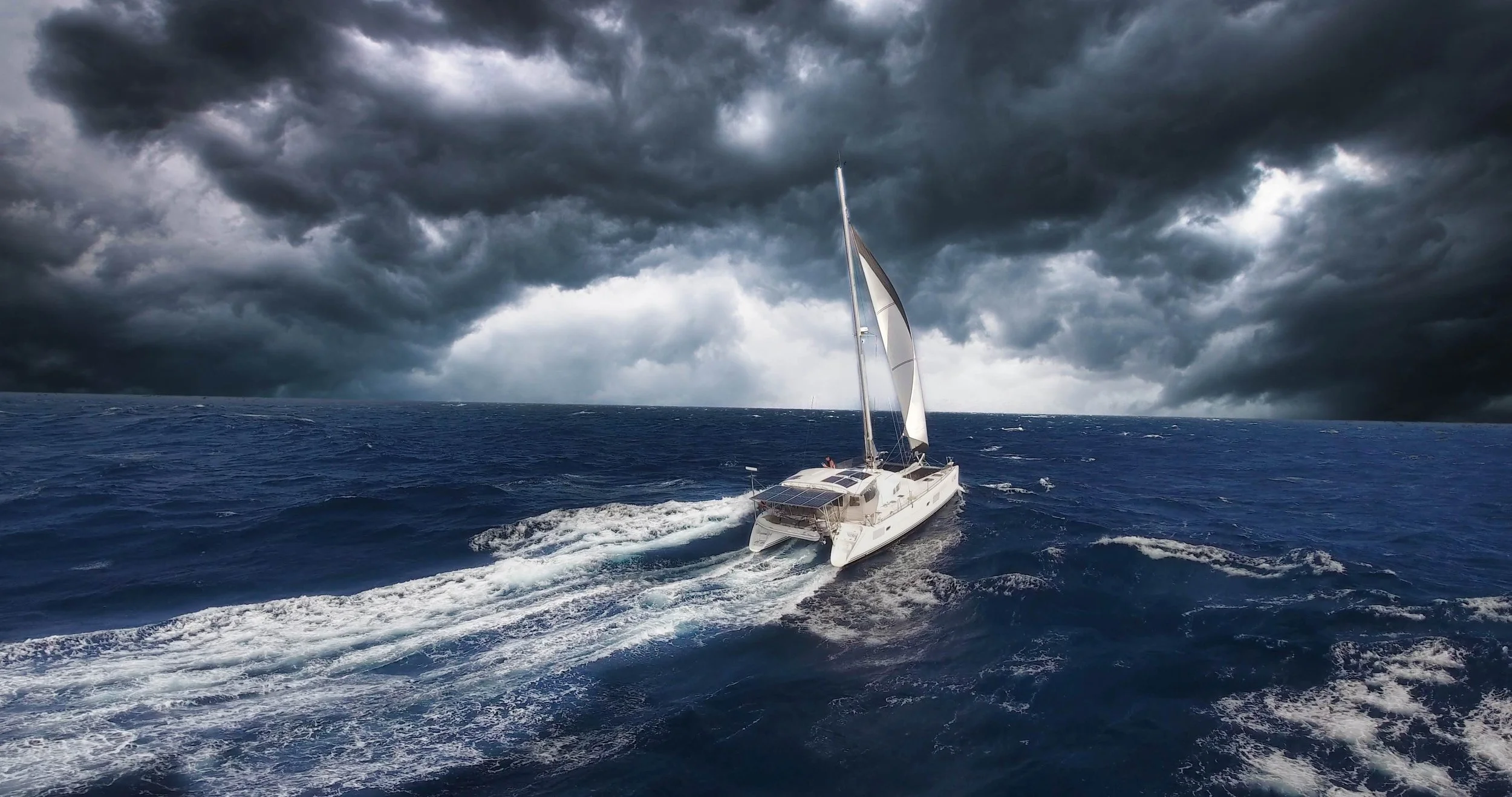
Designed to Go Anywhere.
Safe. Simple. Strong.
Freedom without fear
We designed this boat for our own family. Because out here, safety isn’t optional — it’s everything.
We wanted a boat that could cross oceans with speed, be extremely tough, low maintenance, and ultimately, be our home that we feel incredibly safe in.

“We want to go anywhere..”
The tropics are an incredible playground, and we’ll spend most of our lives here.
But being able to put your finger on a map and say “let’s go there”—that’s the ultimate goal.
The Nahoa 55 gives us that freedom. The ability to explore off the beaten path, in style, comfort, and safety.
Built for warm water living, engineered for extreme cold.
Design Philosophy
Every decision comes back to three things: safety, simplicity, and strength.
Safety is built into every design and outfitting decision - from watertight bulkheads to the absence of through-hulls in accommodation spaces. It’s about creating a boat you can trust completely, wherever you are in the world.
Simplicity breeds confidence. The more intuitive the systems, the less you depend on others. When something does go wrong, you can understand it, fix it, and keep moving — even in the most remote places.Strength comes from aluminum — a material proven by decades of ocean miles. It’s repairable anywhere on earth, and it doesn’t just survive the unexpected; it invites you to go looking for it.
Why Aluminum
Sailing around the world is a monumental task, from navigating foreign waters to procuring broken parts; it’s a full-time job and more. The Nahoa 55 is born from all the lessons we’ve learned over the past ten years and 50,000+ nautical miles from our first circumnavigation.
Aluminum is the ultimate material for long-range, expedition-style cruising yachts due to its exceptional strength-to-weight ratio, corrosion resistance, and ductility (deforms before it breaks). Unlike fiberglass, aluminum doesn’t require constant polishing, and deck hardware such as cleats and stations are welded on, eliminating leaks from above.
Maintaining a boat is a constant, but aluminum significantly minimizes those efforts. Most great expedition vessels are still built in aluminum to this day.
Carbon Fiber
Upon impact, carbon fiber tends to splinter, creating sharp, jagged edges. This splintering can compromise the structural integrity of the hull. Despite its strength, the brittleness of carbon fiber means it can be more susceptible to catastrophic failure when subjected to high-impact forces.
Fiberglass
When impacted, fiberglass tends to crack and can develop a network of fractures radiating from the point of impact.
Aluminum
Aluminum hulls are extremely ductile, allowing them to absorb and distribute impact forces effectively. Instead of cracking or splintering, aluminum hulls typically deform, showing dents and bends rather than punctures.
Ductility (noun): The ability of a material to undergo significant plastic deformation before rupture, often characterized by its capacity to be stretched or bent without breaking.
Quality & Certification
The Nahoa 55 has been crafted not merely to comply with Lloyd’s SCC and relevant ISO rules for stability, buoyancy, and watertight compartments, but to surpass them. Given that the Nahoa 55 is conceived as an Expedition-style catamaran, having a design that not only meets but exceeds certifiable standards is of paramount importance.
Interested in a Nahoa 55?
Nahoa Yachts
Designed by real sailors. Masterminded by a world-class naval architect. Built by the best.
© 2025 Sailing Nahoa. All rights reserved.







